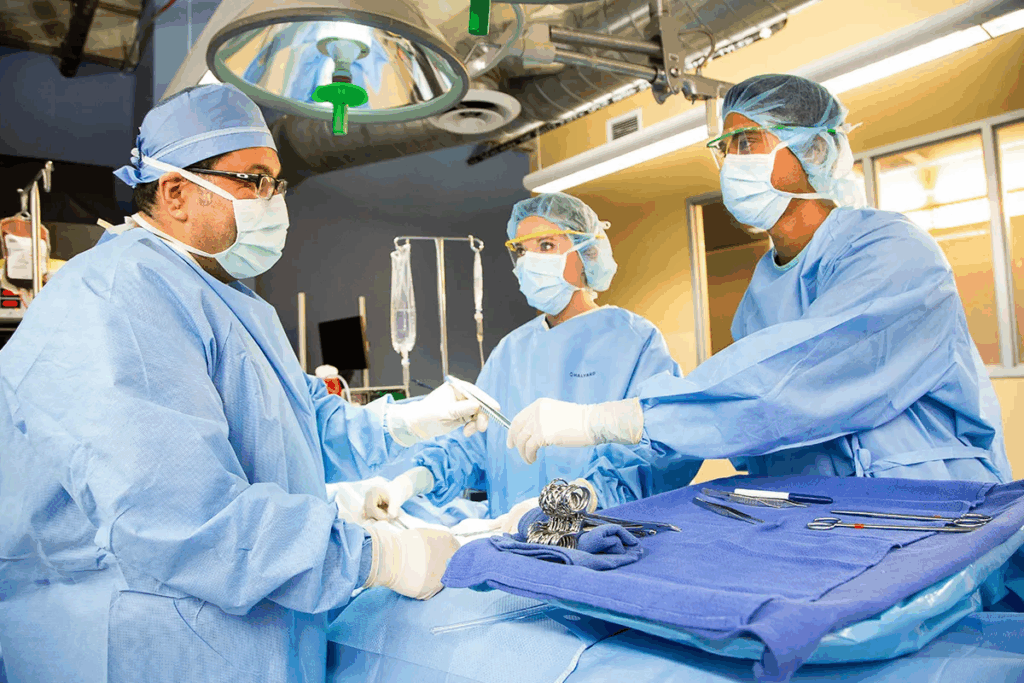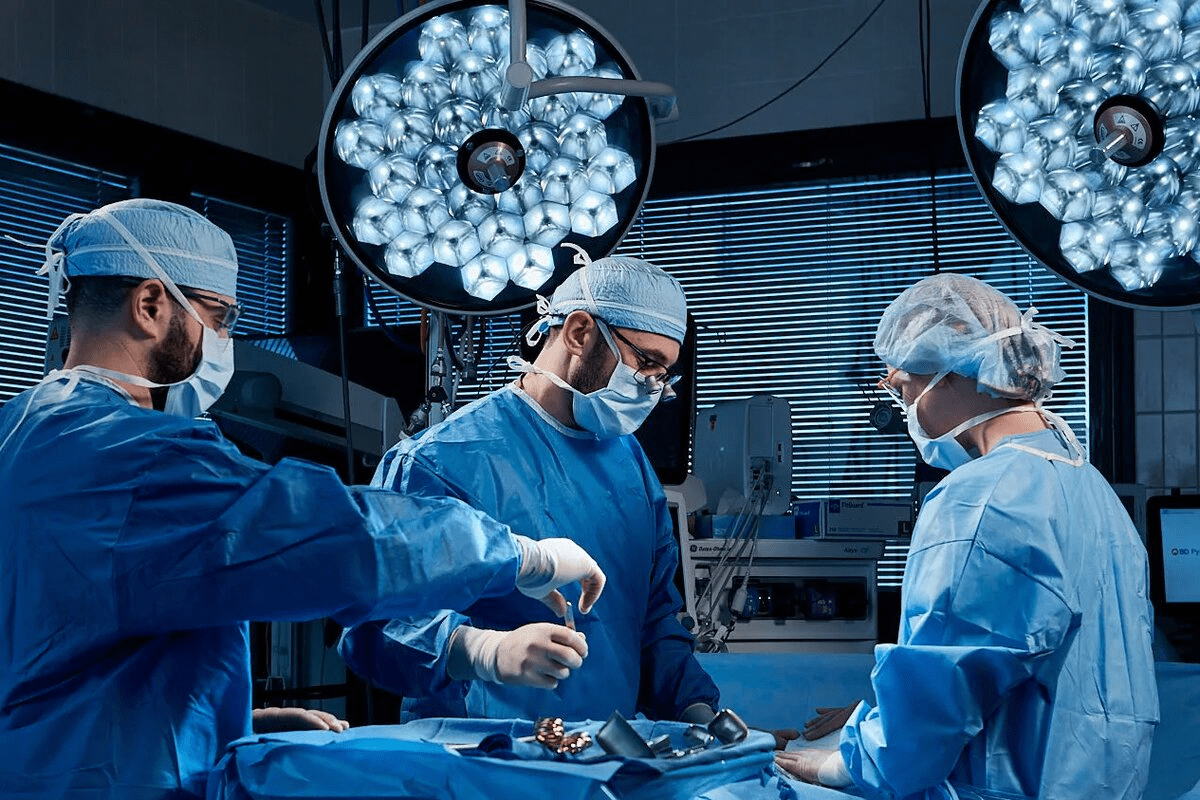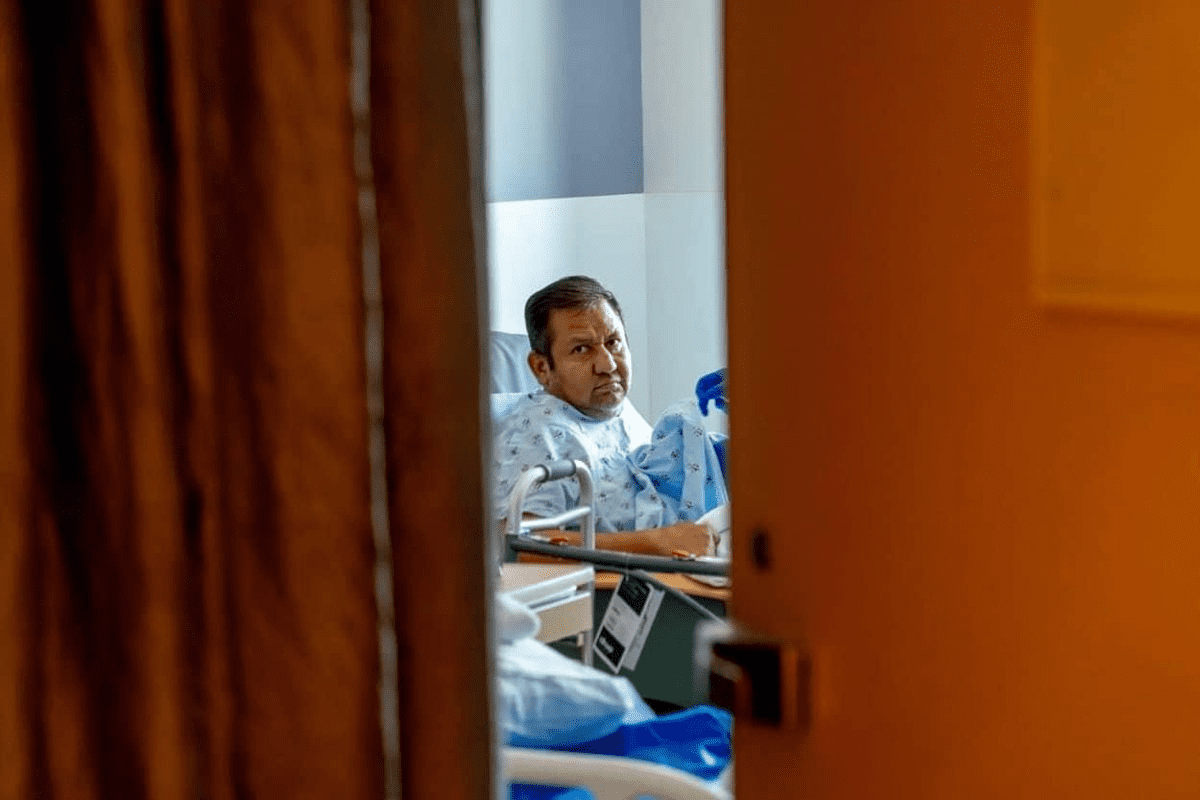
For those facing bladder removal surgery, the idea of living without a bladder seems scary. But, thanks to medical progress and care, people can live full and active lives.
Can you survive without a bladder? Learn how patients live after bladder removal surgery, covering urinary diversion and quality of life.
Studies show that those who have their bladder removed can have excellent long-term results. They often say their life quality is as good as or better than before surgery. Adjusting to life without a bladder is tough, but with the right support, many lead healthy lives.
At our institution, we focus on patient-centered care and the latest medical techniques. We help people through this big change. It’s important for patients and their families to understand life after bladder removal, including how to manage urine and emotional changes.

It’s important to know about bladder removal surgery for those facing it. This surgery, or cystectomy, removes the bladder. It’s often needed for bladder cancer or severe bladder issues.
Radical cystectomy is a major surgery that takes out the bladder and nearby tissues. Men might lose the prostate and seminal vesicles. Women might lose the uterus, ovaries, and part of the vagina. It’s mainly for treating serious bladder cancer.
The surgeon must find a new way for urine to leave the body. This is because the bladder is gone. They use different methods to do this, which we’ll talk about later.
The main reason for this surgery is bladder cancer. It’s when the cancer has gone deep into the bladder wall. Other reasons include:
Every case is different. The choice to have the surgery depends on the patient’s health and how bad their condition is.
Removing the bladder is a complex surgery that needs a skilled team. It starts with an incision in the belly to get to the bladder and nearby organs. The surgeon then carefully removes the bladder, trying to save nerves and tissues.
After removing the bladder, the surgeon makes a new way for urine to leave the body. This could be a stoma, a neobladder, or a continent urinary reservoir. The choice depends on the patient’s health, the cancer’s extent, and what they prefer.

Living without a bladder seems scary, but knowing survival rates helps. Bladder removal surgery, or cystectomy, is done for bladder cancer or severe conditions.
Survival rates after bladder removal depend on several things. These include the cancer’s stage and the patient’s health. Most patients with bladder cancer who have surgery can survive.
Research shows that survival rates are linked to the disease’s extent. The cancer’s stage at surgery is key for survival chances.
Five-year survival rates give a glimpse into long-term outcomes. For bladder cancer surgery, the survival rate is about 65 percent. For cancers that only affect the bladder, it’s up to 79.4 percent.
These numbers are hopeful, showing many patients can live long after surgery. But, survival can vary. It depends on age, health, and other medical conditions.
Many things can affect survival after bladder removal. These include:
Knowing these factors helps patients and doctors make better choices. By focusing on these areas, patients can improve their survival chances.
After bladder removal surgery, patients need a new way to get rid of urine. We’ll look at the different ways to do this, their good points, and what to think about when picking the best one.
The ileal conduit, or urostomy, is a common choice. It makes a new path for urine from the intestine to the outside. The process is simple and has been around for a long time. But, it means using an external bag to catch urine.
Things to keep in mind with an ileal conduit include:
Neobladder reconstruction is more complex. It makes a new bladder from intestine. This way, patients can pee like normal, without an external bag.
Important things to think about with neobladder reconstruction are:
A continent urinary reservoir is another option. It’s made from intestine tissue, like a pouch. Unlike the ileal conduit, it doesn’t need an external bag. Patients must use a catheter to drain urine.
Benefits of a continent urinary reservoir include:
Choosing the right urinary diversion method depends on many things. Talking to a healthcare provider is key to making the best choice.
Consider these when deciding:
Urinary Diversion Method | Key Benefits | Potential Challenges |
Ileal Conduit | Simple procedure | External bag needed |
Neobladder Reconstruction | Natural urination | Incontinence risk |
Continent Urinary Reservoir | Control over urination | Need for catheter |
After bladder removal, you need to learn about new ways to urinate. This can be tough but doable with the right help and info.
There are several ways to manage urine after bladder removal. These include the ileal conduit, neobladder, and continent urinary reservoir. Each method has its own needs for urination.
An ileal conduit involves creating a stoma on your abdomen. Urine goes into a bag attached to the stoma. Patients with this method use a urostomy bag for urine collection.
To manage urination with an ileal conduit, follow these steps:
A neobladder is a new bladder made from intestine. It lets you pee naturally through your urethra. Patients with a neobladder must learn to use their new bladder correctly.
To manage urination with a neobladder, do the following:
A continent urinary reservoir is a pouch made from intestine. It’s emptied by catheter. Patients with this method must catheterize regularly to drain urine.
Urinary Diversion Method | Urination Method | Key Considerations |
Ileal Conduit | Urostomy bag | Stoma care, bag maintenance |
Neobladder | Voiding through urethra | Pelvic muscle exercises, monitoring for complications |
Continent Urinary Reservoir | Catheterization | Regular catheterization, reservoir maintenance |
Knowing what to expect after bladder removal surgery can ease worries and improve recovery. Each person’s recovery is different, but there are common experiences.
The time spent in the hospital after bladder removal surgery varies. It can be a few days to a week or more. This depends on the surgery’s complexity and the patient’s health.
Managing pain well is key after bladder removal surgery. We use medicines and other methods to keep patients comfortable.
Pain management strategies may include:
Moving around early helps prevent blood clots and pneumonia. But, some activities are limited at first.
Typical recommendations include:
Understanding these recovery aspects helps patients prepare better. It also helps them work with their healthcare team for the best results.
Learning to live with a stoma means understanding and handling the changes it brings. You’ll need to know about stoma care, manage your diet, and find support.
A stoma is a surgically made opening for waste diversion. Taking care of it and managing it well is essential for a healthy life.
Every day, you’ll clean the stoma and the skin around it. You’ll use the right products and make lifestyle changes.
Getting help from healthcare professionals and support groups is very helpful.
Living with a neobladder means learning new ways to urinate and managing health. After bladder removal surgery, patients must adjust to a new urinary system. They need to find routines that keep them healthy.
Training your neobladder is key to regaining control over urination. You’ll learn to void urine naturally. At first, you might use timed voiding and double voiding to empty the neobladder fully. Regular pelvic floor exercises also help strengthen muscles for better control.
It’s vital to work with your healthcare provider to create a training plan. They can guide you on the best methods and track your progress.
Incontinence is common for neobladder patients, mainly in the early stages. Managing incontinence requires lifestyle changes and sometimes medical help. Absorbent products can help manage leaks and protect your clothes.
Pelvic floor exercises, like Kegels, can greatly improve continence. In some cases, medications are used to help manage incontinence.
Adapting to life with a neobladder means creating new routines. You’ll need to establish a regular voiding schedule and monitor your fluid intake. Being mindful of your diet is also important for urinary health.
Staying hydrated is key to prevent infections. But, it’s important to manage your fluid intake to avoid overloading the neobladder.
While a neobladder improves life quality, there are risks like urinary tract infections and stones. Regular check-ups with your healthcare provider are essential for early detection and treatment of these issues.
By knowing the risks and working with your healthcare team, you can take steps to prevent problems. This helps keep your neobladder healthy.
Bladder removal surgery starts a new chapter in a patient’s life. They must adapt to new ways of living and return to daily routines. Patients often wonder when they can resume normal activities, go back to work, and start exercising and traveling again.
The recovery time varies for everyone. But most can start with light activities in a few weeks. It usually takes about six weeks to go back to work or school. This time can change based on health and job type.
Key milestones in the recovery timeline include:
Going back to work after bladder removal surgery needs careful planning. Talk to your healthcare provider about your job to figure out when to return. Jobs that are hard on the body might need more time to recover.
“It’s essential to listen to your body and not rush back to work. Recovery is just as important as the surgery itself.”
Medical Expert, Urologist
Exercise is key in recovery. It helps improve health and lowers the risk of problems. Start with easy exercises like walking and then do harder ones.
Traveling after bladder removal surgery needs planning, more so for those with urinary diversions. Here’s what to do:
Understanding the recovery process and planning well helps patients return to their daily activities. They can then enjoy a fulfilling life after bladder removal surgery.
Living without a bladder means you must pay close attention to what you eat and drink. After surgery, you’ll need to change how you eat and drink to stay healthy. This helps with recovery and keeps you feeling good.
Eating a balanced diet is key after bladder removal. Focus on foods that are easy to digest and full of nutrients. Increasing fiber intake helps with bowel movements, which is important for those with urinary diversions. Good sources of fiber include fruits, veggies, and whole grains.
It’s also important to get enough protein to help your body heal. Lean protein sources like poultry, fish, and legumes are great. Also, watch your calcium intake, as some urinary diversions can affect it.
Drinking enough water is critical for those without a bladder. Aim to drink 8-10 glasses of fluid a day. But, your needs might be different based on how active you are and other factors.
Keep an eye on your urine’s color and how much you’re making. Pale yellow or clear urine means you’re drinking enough. Dark yellow or amber-colored urine might mean you need more water. Try to drink fluids all day, not just in big gulps.
Some foods can cause problems after bladder removal. Stay away from foods high in salt to avoid dehydration and electrolyte imbalances. Processed foods and high-sodium snacks should be limited or avoided.
Also, be careful with foods that can cause gas or bad smells, like beans, cabbage, and onions. Keeping clean and using products that help control odors can help manage these issues.
By following these tips, you can improve your life after bladder removal surgery. Always talk to a healthcare provider or a registered dietitian for advice tailored to you.
Life after bladder removal surgery can be tough, both physically and emotionally. People often feel anxious, depressed, and even grieve for what they’ve lost.
Finding ways to cope is key. This might mean talking to loved ones, joining a support group, or trying relaxation methods like deep breathing or meditation.
Meeting others who’ve gone through the same thing can be very helpful. You can find support groups online or in person. They offer a place to share feelings and get support.
It’s also important to manage anxiety and depression after surgery. Getting help from a therapist or counselor is a good step. Plus, taking care of yourself with exercise and mindfulness can help a lot.
Living without a bladder is a big concern for many. Studies show that with the right care, people can live well. It’s important to follow doctor’s orders and go to all follow-up visits.
This helps avoid problems and keeps life good. Knowing what bladder removal means and taking care of your health is key. Regular check-ups with doctors are also vital.
After bladder removal, you’ll need to learn a new way to handle urine. This might be through an ileal conduit or neobladder.
Managing your new urinary system means learning about your stoma or catheter. You’ll also need to make lifestyle changes. Always follow your doctor’s advice and keep up with follow-up appointments.
Yes, many people live active and happy lives after bladder removal. With the right care, you can adapt to your new urinary system and do the things you love.
Bladder removal surgery comes with risks like infection and bleeding. It’s important to talk to your doctor about these risks. Following their advice can help avoid complications.
It’s key to take good care of your stoma or catheter. This helps prevent problems and aids in your recovery. Your healthcare provider will show you how to do this.
Yes, you can usually get back to your exercise routine after bladder removal. But, it’s important to listen to your doctor and take precautions to stay safe.
Bladder removal can change your sex life, but how much depends on you. Talk to your doctor or a sex therapist to find ways to keep your sex life healthy and fulfilling.
The long-term effects of bladder removal vary. But, with proper care, many people lead active and happy lives. Regular check-ups with your healthcare provider are key to staying on track.
Yes, many people travel after bladder removal. Just remember to pack extra supplies and research medical facilities at your destination.
It’s normal to feel a range of emotions after surgery. Getting support from loved ones, support groups, or mental health professionals can help you deal with these feelings.
National Center for Biotechnology Information How Do You Live Without a Bladder After https://pmc.ncbi.nlm.nih.gov/articles/PMC3966145/
Subscribe to our e-newsletter to stay informed about the latest innovations in the world of health and exclusive offers!
WhatsApp us